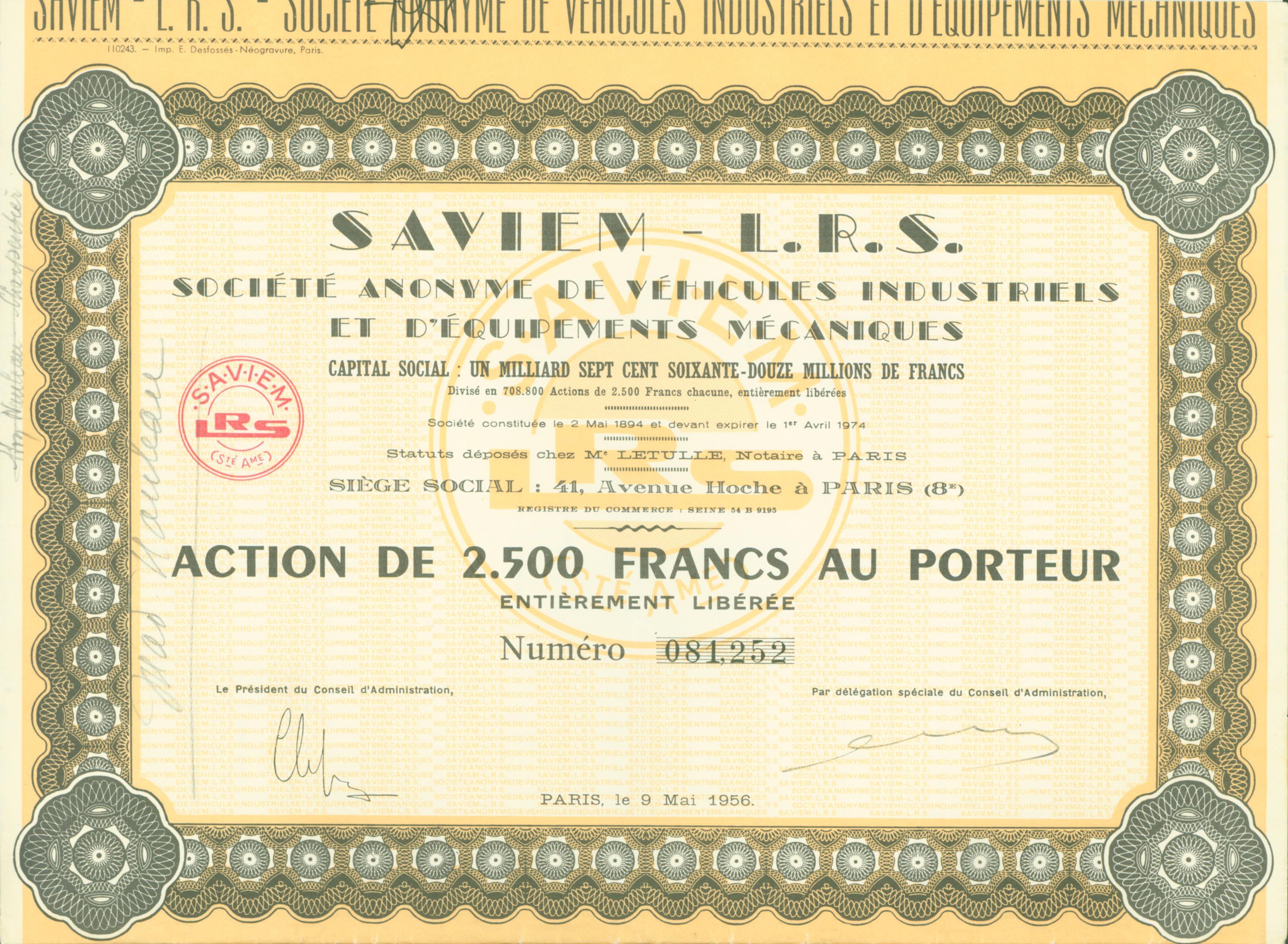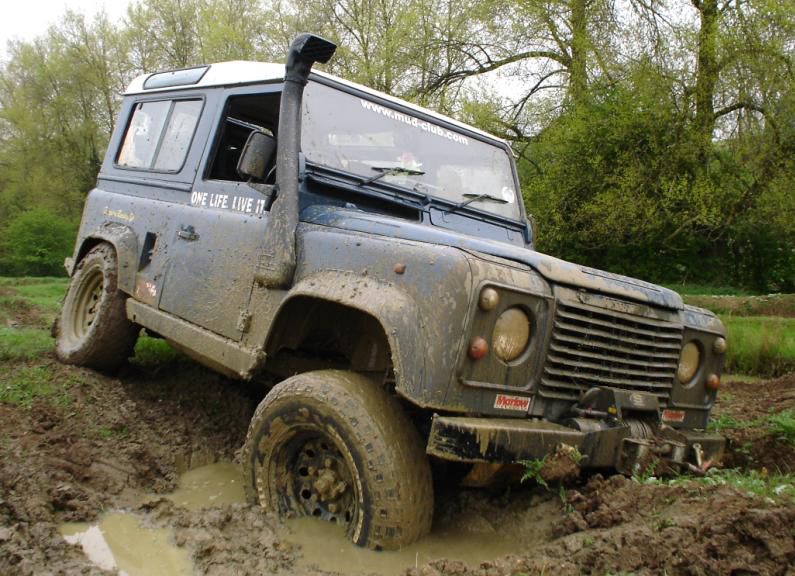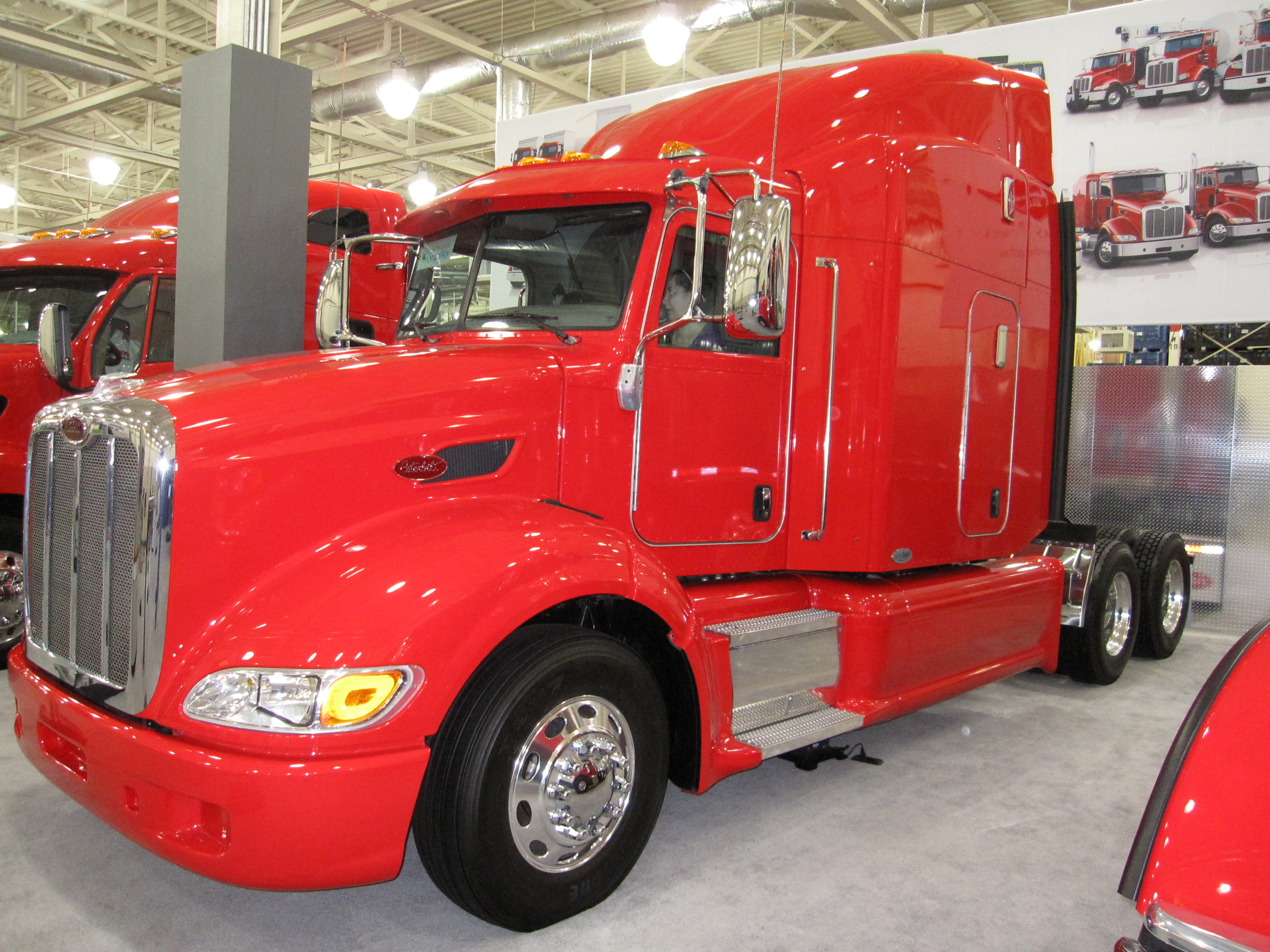|
Saviem SM8
The Saviem SM8 (8-ton payload) was a range of medium-duty trucks manufactured by the French manufacturer Saviem between 1967 and 1975. The truck was part of the Saviem SM range. Characteristics Dimensions The cabin was a tip cab (Type 812). The range had a rigid form and two tractor units (SM8 T, SM8 Y). The wheelbases were between 3m and 5.3m. Engines The engine used for the SM8 (and also the SM7) was the 597/797, an atmospheric with a power output of at 2900 rpm (on its later evolutions) and a torque of at 1700 rpm. Transmission A 5-speed (4 synchronised) 301-12 manual gearbox was mounted as standard. Suspension The SM8 had a suspension of leaf springs with dampers at the front and rear. SM8 4x4 The SM8 4x4 was the four-wheel-drive version of the SM8. It was used as an off-roader and military vehicle. It was a permanent 4x4 with locking centre differential in the transfer case. The SM8 4x4 also had a differential lock A locking differential is a mechanical compo ... [...More Info...] [...Related Items...] OR: [Wikipedia] [Google] [Baidu] |
Saviem
The Société Anonyme de Véhicules Industriels et d'Équipements Mécaniques (), commonly known by the acronym Saviem (), was a French manufacturer of trucks and buses/coaches part of the Renault group, headquartered in Suresnes, Île-de-France. The company was established in 1955 by merging Renault heavy vehicle operations with Somua and Latil and disappeared in 1978 when was merged with former rival Berliet to form Renault Véhicules Industriels. The company initially had various factories for vehicle production around France (mainly at the Paris area) which came from its predecessors and Chausson, but it soon centred assembly on Blainville-sur-Orne (trucks) and Annonay (buses and coaches). Saviem formed partnerships with other manufacturers, leading to technology-sharing agreements. History Early years At the end of 1946, Renault abandoned the production of heavy trucks in view of its financial troubles, and the company lost the position of France's market leader which ... [...More Info...] [...Related Items...] OR: [Wikipedia] [Google] [Baidu] |
Atmospheric Engine
The atmospheric engine was invented by Thomas Newcomen in 1712, and is often referred to as the Newcomen fire engine (see below) or simply as a Newcomen engine. The engine was operated by condensing steam drawn into the cylinder, thereby creating a partial vacuum which allowed the atmospheric pressure to push the piston into the cylinder. It was historically significant as the first practical device to harness steam to produce mechanical work. Newcomen engines were used throughout Britain and Europe, principally to pump water out of mines. Hundreds were constructed throughout the 18th century. James Watt's later engine design was an improved version of the Newcomen engine that roughly doubled fuel efficiency. Many atmospheric engines were converted to the Watt design, for a price which was based on a fraction of the fuel-savings. As a result, Watt is today better known than Newcomen in relation to the origin of the steam engine. Precursors Prior to Newcomen a number of small ... [...More Info...] [...Related Items...] OR: [Wikipedia] [Google] [Baidu] |
Renault Trucks
Renault Trucks is a French commercial truck manufacturer with corporate headquarters at Saint-Priest near Lyon. Originally part of Renault, it has been a subsidiary of the Volvo Group since 2001. From its beginnings in 1978 to 2002, the company was called (''Renault Industrial Vehicles''), from 1992 on officially written as Renault V. I.. Until 2002, Renault Véhicules Industriels also manufactured buses. History Renault first began building dedicated commercial trucks in 1906. In 1956, however Renault stopped producing trucks and buses under its own name. Instead, the company Saviem was formed as a subsidiary of their own commercial products with the manufacturers Somua and Latil. Lighter commercials kept on using the Renault name, however. From 1957 on, Saviem was also used as the brand name for the trucks and buses produced by the company. As a result of French industrial policy, in 1975 state-owned Renault also acquired the truck and bus manufacturer Berliet f ... [...More Info...] [...Related Items...] OR: [Wikipedia] [Google] [Baidu] |
Differential Lock
A locking differential is a mechanical component, commonly used in vehicles, designed to overcome the chief limitation of a standard open differential by essentially "locking" both wheels on an axle together as if on a common shaft. This forces both wheels to turn in unison, regardless of the traction (or lack thereof) available to either wheel individually. When the differential is unlocked (open differential), it allows each wheel to rotate at different speeds (such as when negotiating a turn), thus avoiding tire scuffing. An open (or unlocked) differential always provides the same torque (rotational force) to each of the two wheels on that axle. Therefore, although the wheels can rotate at different speeds, they apply the same rotational force, even if one is entirely stationary, and the other spinning. (Equal torque, unequal rotational speed). By contrast, a locked differential forces both left and right wheels on the same axle to rotate at the same speed under nearly all ci ... [...More Info...] [...Related Items...] OR: [Wikipedia] [Google] [Baidu] |
Transfer Case
A transfer case is a part of the drivetrain of four-wheel-drive, all-wheel-drive, and other multiple powered axle vehicles. The transfer case transfers power from the transmission to the front and rear axles by means of drive shafts. It also synchronizes the difference between the rotation of the front and rear wheels, and may contain one or more sets of low range gears for off-road use. Functions * The transfer case receives power from the transmission and sends it to both the front and rear axles, or just one (usually the rear.) This can be done with gears, hydraulics, or chain drive. On some vehicles, such as four-wheel-drive trucks or vehicles intended for off-road use, this feature is controlled by the driver. The driver can put the transfer case into either "two-wheel-drive" or "four-wheel-drive" mode. This is sometimes accomplished by means of a shifter, similar to that in a manual transmission. On some vehicles, this may be electronically operated by a switch inste ... [...More Info...] [...Related Items...] OR: [Wikipedia] [Google] [Baidu] |
Military Vehicle
A military vehicle is any vehicle for land-based military transport and activity, including combat vehicles; both specifically designed for, or significantly used by military and armed forces. Most military vehicles require off-road capabilities and/or vehicle armour (plate), making them heavy, therefore some have vehicle tracks instead of being wheeled vehicles; and half-tracks have ''both''. Furthermore, some military vehicles are amphibious, constructed for use on land and water, and sometimes also intermediate surfaces. Military vehicles are almost always camouflaged, or at least painted in inconspicuous colour(s). In contrast, under the Geneva Conventions, all ''non-combatant'' military vehicles, such as field ambulances and mobile first aid stations, must be properly and clearly ''marked'' as such. Under the conventions, when respected, such vehicles are legally immune from deliberate attack by all combatants. Historically, militaries explored the use of commercial of ... [...More Info...] [...Related Items...] OR: [Wikipedia] [Google] [Baidu] |
Off-roading
Off-roading is the activity of driving or riding in a vehicle on unpaved surfaces such as sand, gravel, riverbeds, mud, snow, rocks, and other natural terrain. Types of off-roading range in intensity, from leisure drives with unmodified vehicles, to competitions with customised vehicles and professional drivers. Off-roaders have been met with criticism for the environmental damage caused by their vehicles. There have also been extensive debates over the role of government in regulating the sport, including a Supreme Court case brought against the Bureau of Land Management in the United States. Off-road vehicle Travelling over difficult terrain requires vehicles capable of off-road driving such as ATVs. These vehicles have features designed specifically for use in off-road conditions such as extended ground clearance, off-road tires and a strengthened drive-train. Some manufacturers offer vehicles specifically designed for off-road use. Recreational off-roading Some e ... [...More Info...] [...Related Items...] OR: [Wikipedia] [Google] [Baidu] |
Leaf Spring
A leaf spring is a simple form of spring commonly used for the suspension in wheeled vehicles. Originally called a ''laminated'' or ''carriage spring'', and sometimes referred to as a semi-elliptical spring, elliptical spring, or cart spring, it is one of the oldest forms of vehicle suspension. A leaf spring is one or more narrow, arc-shaped, thin plates which are attached to the axle and chassis in a way that allows the leaf spring to flex vertically in response to irregularities in the road surface. Lateral leaf springs are the most commonly used arrangement, running the length of the vehicle and mounted perpendicular to the wheel axle, but numerous examples of transverse leaf springs exist as well. Leaf springs can serve multiple suspension functions: location, springing, and to some extent damping as well, through interleaf friction. However, this friction is not well controlled, resulting in stiction and irregular suspension motions. For this reason, some manufacturers have ... [...More Info...] [...Related Items...] OR: [Wikipedia] [Google] [Baidu] |
Commercial Motor
''Commercial Motor'' is a weekly magazine serving the road transport industry in the United Kingdom. Founded in 1905 by Edmund Dangerfield, it is notable for having been "the first journal to be devoted exclusively to the commercial vehicle engaged in the conveyance of goods or in passenger carrying". Originally named ''The Commercial Motor'', the title was shortened to ''Commercial Motor'' for the first issue of 1966. The publication is commonly referred to as 'CM' by its readers and editorial staff. ''Commercial Motor'' was initially published by Temple Press and since 2011 it has been published by Road Transport Media. Launch ''The Commercial Motor'' was launched in March 1905 by Temple Press. In the leader of the first issue it described itself as a "missionary and educative medium". For the first issue on 16 March, 20,000 copies were issued "in Britain and other countries, with the hope that the normal weekly circulation would be at least 5,000". Composition The content ... [...More Info...] [...Related Items...] OR: [Wikipedia] [Google] [Baidu] |
Tractor Unit
A tractor unit (also known as a truck unit, power unit, prime mover, ten-wheeler, semi-tractor, tractor truck, semi-truck, tractor cab, truck cab, tractor rig, truck rig or big rig or simply a tractor, truck, semi or rig) is a characteristically heavy-duty towing engine that provides motive power for hauling a towed or trailered load. These fall into two categories: heavy- and medium-duty military and commercial rear-wheel-drive semi-tractors used for hauling semi-trailers, and very heavy-duty typically off-road-capable, often 6×6, military and commercial tractor units, including ballast tractors. Overview Tractor units typically have large displacement diesel engines for power, durability, and economy; several axles; and a multi-ratio transmission (10, 13, or 18 gears) for maximum flexibility in gearing. The tractor-trailer combination distributes a load across multiple axles while being more maneuverable than an equivalently sized rigid truck. The most common traile ... [...More Info...] [...Related Items...] OR: [Wikipedia] [Google] [Baidu] |





.jpg)
